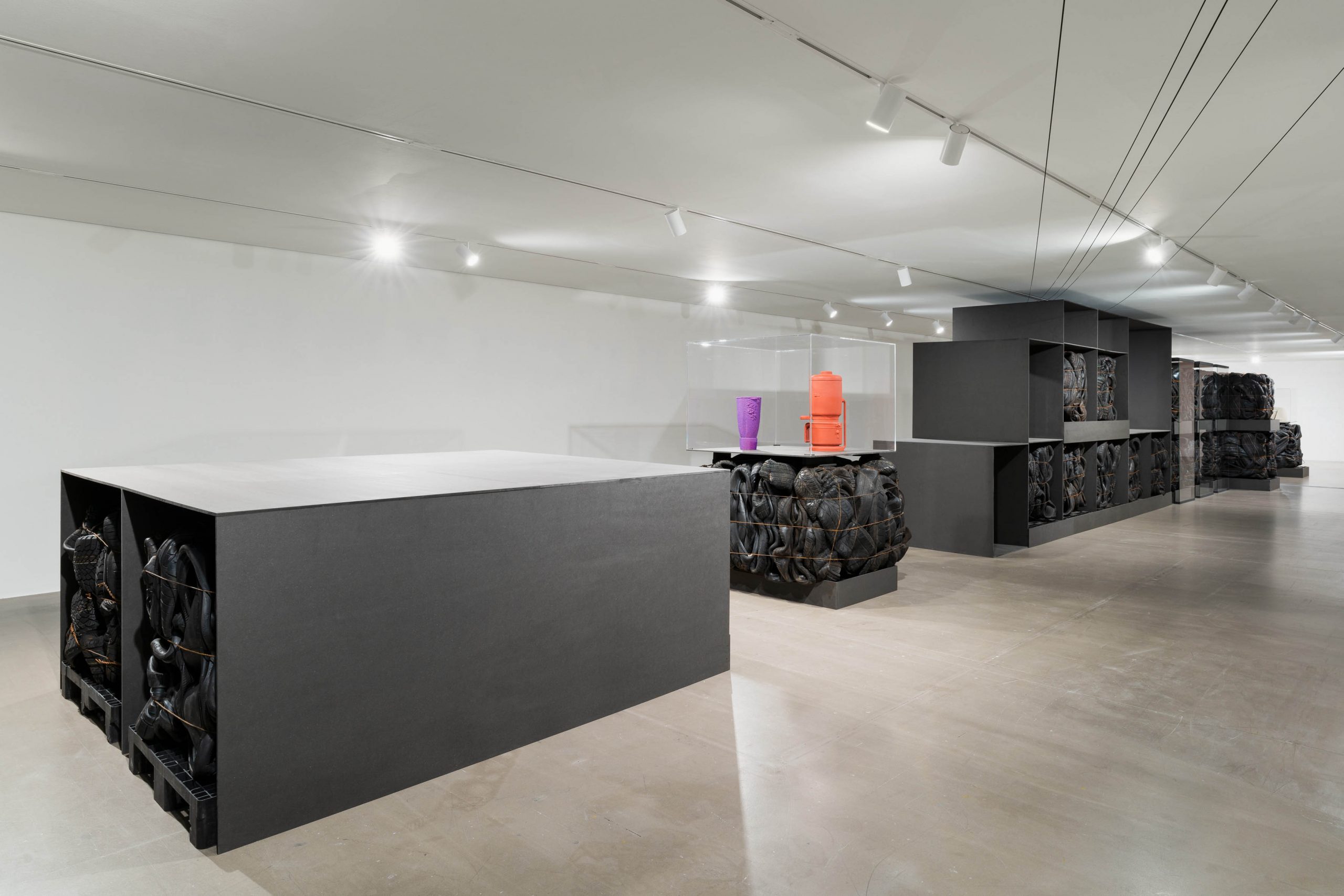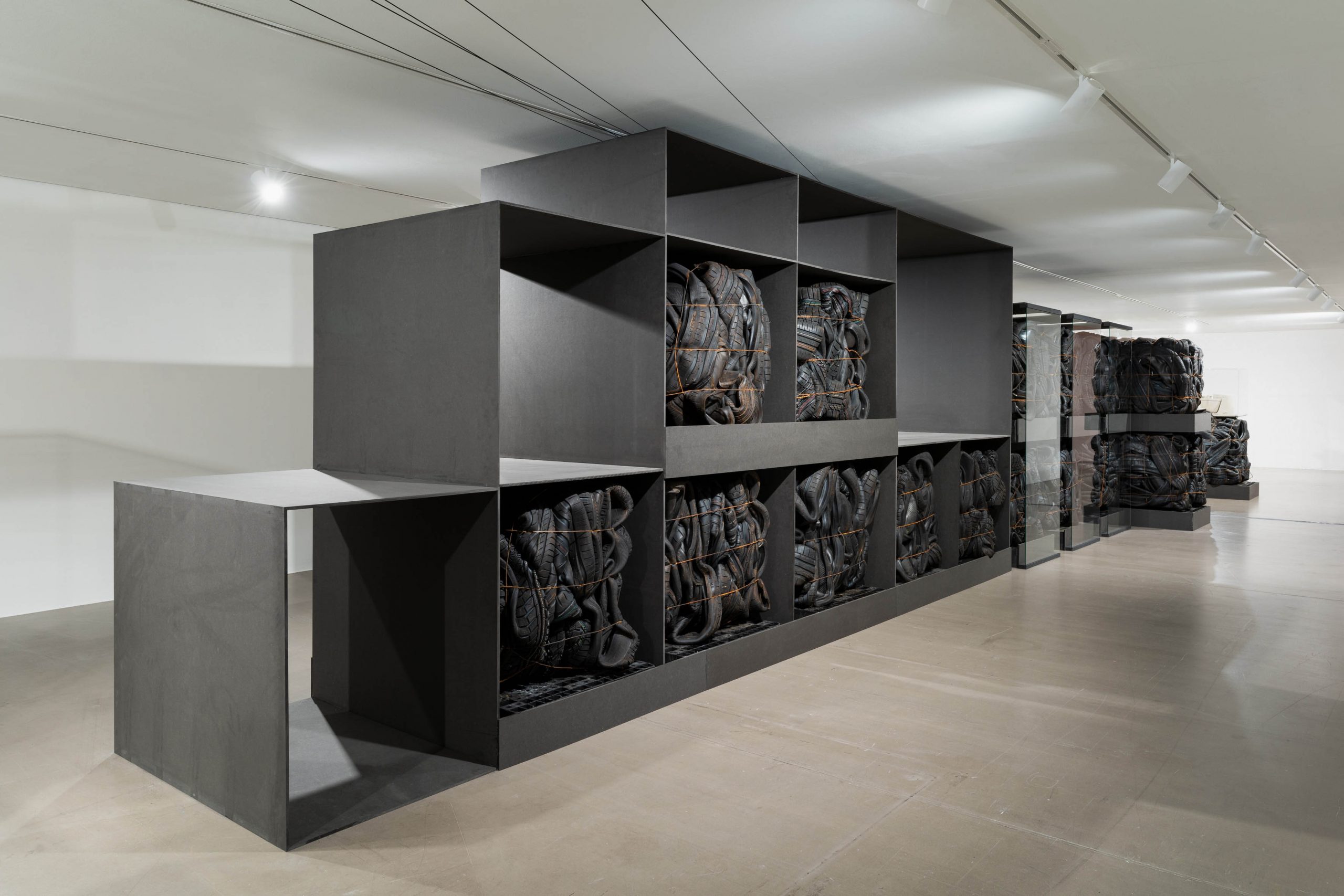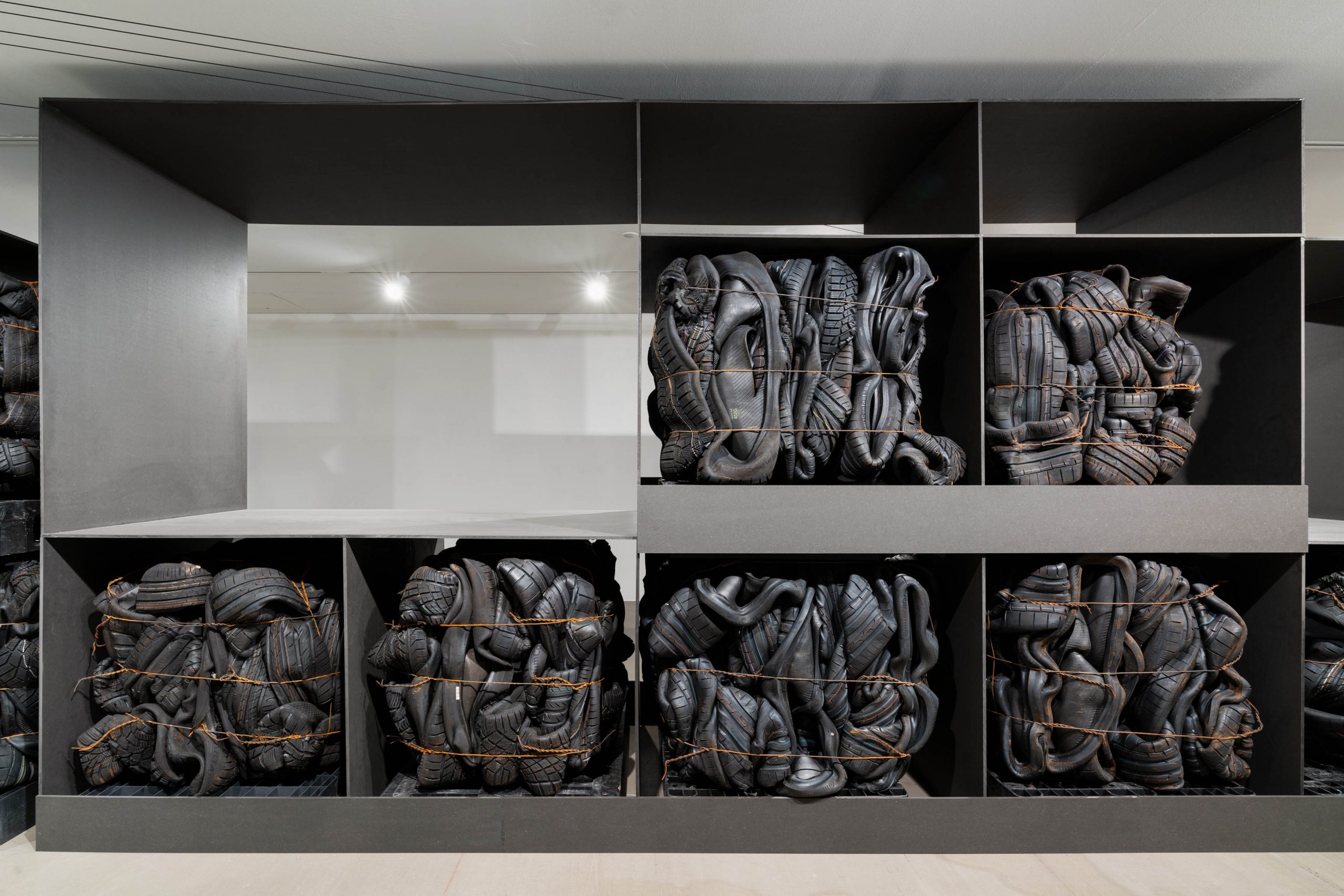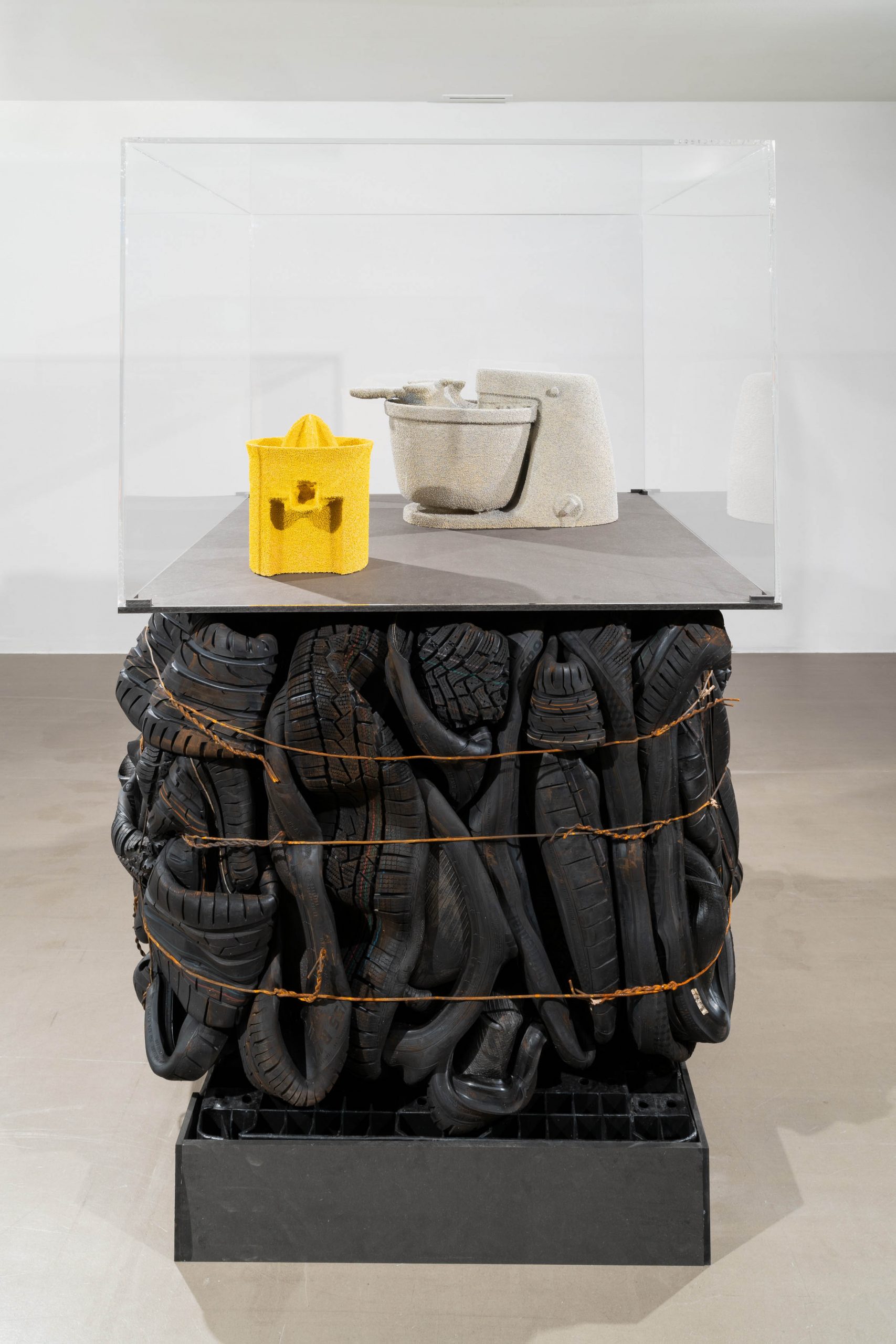CLOSE
2024
Heidi Horten Museum, Vienna, Austria (forthcoming)
PPC, Frankfurt, Germany (forthcoming)
06.08-08.10.2024
Skulptur Projekte Stockholm
Beau Travail
Stockholm, Sweden
Skulptur Projekte Stockholm
Beau Travail
Stockholm, Sweden
05.23-07.27.2024
Our Porcelain Thoughts
DREI
Cologne, Germany
Our Porcelain Thoughts
DREI
Cologne, Germany
11.04-05.18.2024
Dark Glasses
Layr
Vienna
Dark Glasses
Layr
Vienna
2023
15.12.2023 – 07.04.2024
Your and your vim
Aspen Art Museum
Colorado, USA
Your and your vim
Aspen Art Museum
Colorado, USA
02.09.2023-07.01.2024
Good Year
MARTa Museum Herford
Herford, Germany
Good Year
MARTa Museum Herford
Herford, Germany
03.05-14.06.2023
Nature wills it
The Ranch
Montauk, New York
Nature wills it
The Ranch
Montauk, New York
04.11-10.12.2022
Apple Red Cranberry House
Bortolami
New York
Apple Red Cranberry House
Bortolami
New York
27.08-11.12.2022
Forest Through The Trees
Laumeier Sculpture Park
St. Louis, Missouri
Forest Through The Trees
Laumeier Sculpture Park
St. Louis, Missouri
2022
30.04-30.07.2022
Auf dem Asphalt botanisieren gehen
Klosterfelde Edition
Berlin
Auf dem Asphalt botanisieren gehen
Klosterfelde Edition
Berlin
30.04-11.06.2022
Looking Through the Threshold
carlier gebauer
Berlin
Looking Through the Threshold
carlier gebauer
Berlin
17.02-28.10.2022
ALDO ROSSI’S SLEEPING ELEPHANT
Belvedere
Vienna, Austria
ALDO ROSSI’S SLEEPING ELEPHANT
Belvedere
Vienna, Austria
2021
26.10.2021–29.01.2022
Lives of an Object
ARCH
Athens, Greece
Lives of an Object
ARCH
Athens, Greece
12.06.-17.10.2021
Lichtenfels Sculpture
Austria
Lichtenfels Sculpture
Austria
28.04.-20.06.2021
I Think I Look More like the Chrysler Building
Vleeshal
Middelburg
I Think I Look More like the Chrysler Building
Vleeshal
Middelburg
27.03.2021-28.03.2021
Friend of a Friend
Warsaw
Poland
Friend of a Friend
Warsaw
Poland
2020
09.12.2020-30.01.2021
Babysteps into Masochism
Emanuel Layr
Vienna, Austria
Babysteps into Masochism
Emanuel Layr
Vienna, Austria
10.09.2020-07.11.2020
Fate of a cell / Η Τύχη ενός Κυττάρου
Martinos
Athens
Fate of a cell / Η Τύχη ενός Κυττάρου
Martinos
Athens
19.09.2020-31.10.2020
Ice to Gas
Pedro Cera
Lisbon
Ice to Gas
Pedro Cera
Lisbon
11.09.2020-17.19.2020
Various Others
Sperling, München
Munich, Germany
Various Others
Sperling, München
Munich, Germany
09.11.2019-08.03.2020
R.M.M. Rockefeller Center
Rockefeller Center
New York, NY
R.M.M. Rockefeller Center
Rockefeller Center
New York, NY
09.11.2019-08.03.2020
L’homme qui marche
Kunsthalle Bielefeld
Bielefeld, Germany
L’homme qui marche
Kunsthalle Bielefeld
Bielefeld, Germany
2019
27.09.2019―26.01.2020
My Fetish Years
Museum für Gegenwartskunst
Siegen, Germany
My Fetish Years
Museum für Gegenwartskunst
Siegen, Germany
11.01.―16.02.2019
Germanic Artifacts
Bortolami
New York, USA
Germanic Artifacts
Bortolami
New York, USA
2018
13.10.―22.12.2018
Positioner
Matthew Marks
Los Angeles, USA
Positioner
Matthew Marks
Los Angeles, USA
15.05.―21.07.2018
THEMOVE
Emanuel Layr Gallery
Vienna, Austria
THEMOVE
Emanuel Layr Gallery
Vienna, Austria
03.03.―13.05.2018
An Idea of Late German Sculpture; To The People Of New York, 2018
Kunsthalle Zürich
Zürich, Switzerland
An Idea of Late German Sculpture; To The People Of New York, 2018
Kunsthalle Zürich
Zürich, Switzerland
09.03.―22.07.2018
Between The Waters
Whitney Museum of Art
New York, USA
Between The Waters
Whitney Museum of Art
New York, USA
17.03.―28.04.2018
Embrassade
Fons Welters
Amsterdam, Netherlands
Embrassade
Fons Welters
Amsterdam, Netherlands
2017
19.01.―08.04.2017
Year Of The Monkey
Galerie Emanuel Layr
Rome, Italy
Year Of The Monkey
Galerie Emanuel Layr
Rome, Italy
28.04.―30.07.2017
SCHREI MICH NICHT AN, KRIEGER!
Schirn Kunsthalle
Frankfurt, Germany
SCHREI MICH NICHT AN, KRIEGER!
Schirn Kunsthalle
Frankfurt, Germany
09.04.―30.05.2017
Vertical Gardens
Antenna Space
Shanghai, China
Vertical Gardens
Antenna Space
Shanghai, China
03.06.―03.09.2017
Die Kommenden
Sprengel Museum
Hannover, Germany
Die Kommenden
Sprengel Museum
Hannover, Germany
14.09.―25.10.2017
in awe
Kunsthalle Exnergasse
Vienna, Austria
in awe
Kunsthalle Exnergasse
Vienna, Austria
06.2017
Art Basel Parcours
Art Basel
Basel, Switzerland
Art Basel Parcours
Art Basel
Basel, Switzerland
2016
07.06.―11.09.2016
Outrageous Acts and Everyday Rebellions
Kaufmann Repetto
Milan, Italy
Outrageous Acts and Everyday Rebellions
Kaufmann Repetto
Milan, Italy
28.01.―27.02.2016
RUN, RUN, RUNWAY
Golsa
Oslo, Norway
RUN, RUN, RUNWAY
Golsa
Oslo, Norway
27.02.―26.03.2016
Heartbreak Highway
Real Fine Arts
New York, USA
Heartbreak Highway
Real Fine Arts
New York, USA
17.06.―27.08.2016
My History of Flow
S.A.L.T.S.
Basel, Switzerland
My History of Flow
S.A.L.T.S.
Basel, Switzerland
04.07.―16.09.2016
fat center trash land 1―7, 2016
Small scale Sculpture triennial Fellbach
Fellbach, Germany
fat center trash land 1―7, 2016
Small scale Sculpture triennial Fellbach
Fellbach, Germany
09.09.―05.11.2016
Fieber
Emanuel Layr Gallery
Wien, Austria
Fieber
Emanuel Layr Gallery
Wien, Austria
04.07.―16.09.2016
In Bed with M/L Artspace
9th Berlin Biennale
Berlin, Germany
In Bed with M/L Artspace
9th Berlin Biennale
Berlin, Germany
03.12.2016―12.02.2017
Available Light
Kunstverein Braunschweig
Braunschweig, Germany
Available Light
Kunstverein Braunschweig
Braunschweig, Germany
2015
2015
Surrounding Audience
The New Museum Triennial
New York, USA
Surrounding Audience
The New Museum Triennial
New York, USA
09.2015
Emerging Artist Fellowship Exhibition
Queens
New York, USA
Emerging Artist Fellowship Exhibition
Queens
New York, USA
26.02.―04.04.2015
Looking at you (revived) again
Off Vendom
New York, USA
Looking at you (revived) again
Off Vendom
New York, USA
28-05.―16.05.2015
One step away from further Hell
Vilma Gold
London, UK
One step away from further Hell
Vilma Gold
London, UK
23.11.2015―08.01.2016
National Gallery 2―Empire Map
Chewday’s
London, UK
National Gallery 2―Empire Map
Chewday’s
London, UK
22.02.―05.04.2015
The problem today is not the other but the self
MINI/Goethe-Institut Ludlow 38
New York, USA
The problem today is not the other but the self
MINI/Goethe-Institut Ludlow 38
New York, USA
2014
09.05.2014-19.07.2014
Warm Math
Balice Hertling, New York
New York
Warm Math
Balice Hertling, New York
New York
05.2014
Frieze New York
Frieze Art Fair at Randall’s Island
New York, USA
Frieze New York
Frieze Art Fair at Randall’s Island
New York, USA
02.05.―07.06.2014
Bloomington: Mall Of America
Bortolami Gallery
New York, USA
Bloomington: Mall Of America
Bortolami Gallery
New York, USA
27.04.―01.06.2014
YES, I’M PREGNANT
Skulpturen museum Glaskasten
Marl, Germany
YES, I’M PREGNANT
Skulpturen museum Glaskasten
Marl, Germany
22.03.―17.05.2014
Geburt und Familie
White Flag Projects
Saint Louis, USA
Geburt und Familie
White Flag Projects
Saint Louis, USA
08.―09.2014
Piracanga Freedom?
Two Hotel, Piracanga Beach
Bahia, Brazil
Piracanga Freedom?
Two Hotel, Piracanga Beach
Bahia, Brazil
06.06.―14.08.2014
Chat Jet (Part 2), Sculpture in Reflection
Künstlerhaus KM
Austria
Chat Jet (Part 2), Sculpture in Reflection
Künstlerhaus KM
Austria
06.06.―03.08.2015
Revelry
Kunsthalle Bern
Bern, Switzerland
Revelry
Kunsthalle Bern
Bern, Switzerland
13.09.―18.10.2014
DIE
Parisa Kind
Frankfurt, Germany
DIE
Parisa Kind
Frankfurt, Germany
2013
14.12.2013-08.02.2014
Soft Wear
Sandy Brown
Berlin
Soft Wear
Sandy Brown
Berlin
24.02.―21.04.2013
From One Artist To Another
Kunstverein Wiesbaden
Germany
From One Artist To Another
Kunstverein Wiesbaden
Germany
13.09.―18.10.2013
On Thomas Bayrle
The Artist’s Institute
New York, USA
On Thomas Bayrle
The Artist’s Institute
New York, USA
05.2013
The Doors
Skulpturenpark Köln
Köln, Germany
The Doors
Skulpturenpark Köln
Köln, Germany
27.06.―09.08.2013
Freak Out
Greene Naftali Gallery
New York, USA
Freak Out
Greene Naftali Gallery
New York, USA
27.09.―09.11.2013
Love of Technology
Museum of Contemporary Art
North Miami, USA
Love of Technology
Museum of Contemporary Art
North Miami, USA
2012
05.02.2012-22.04.2012
Hang Harder
Neuer Aachener Kunstverein
Aachen, Germany
Hang Harder
Neuer Aachener Kunstverein
Aachen, Germany
12.2012
Lena Henke: First Faces, book launch at Karma Books, New York
Karma
New York, NY
Lena Henke: First Faces, book launch at Karma Books, New York
Karma
New York, NY
13.01.2012-19.02.2012
If I had eight hours to chop down a tree, I would spend six sharpening my axe
Kunstraum Riehen
Basel, Switzerland
If I had eight hours to chop down a tree, I would spend six sharpening my axe
Kunstraum Riehen
Basel, Switzerland
01.06.―29.07.2012
Core, Cut, Care
Oldenburger Kunstverein
Germany
Core, Cut, Care
Oldenburger Kunstverein
Germany
14.09.―21.10.2012
H․ H․ Bennett, Lena Henke and Cars
1857
Oslo, Norway
H․ H․ Bennett, Lena Henke and Cars
1857
Oslo, Norway
2011
15.06.―07.08.2011
Andrei Koschmieder puts
Real Fine Arts
New York, NY
Andrei Koschmieder puts
Real Fine Arts
New York, NY
23.04.―18.06.2011
Schlangen im Stall, “snakes in the barn”
Galerie Parisa Kind Frankfurt
Frankfurt am Main, Germany
Schlangen im Stall, “snakes in the barn”
Galerie Parisa Kind Frankfurt
Frankfurt am Main, Germany
2010
05.2010
WIR UEBER UNS
Neue Alte Bruecke Frankfurt
Frankfurt am Main, Germany
WIR UEBER UNS
Neue Alte Bruecke Frankfurt
Frankfurt am Main, Germany
08.2010
you have four eyes, (First ladies)
V 8
Karlsruhe, Germany
you have four eyes, (First ladies)
V 8
Karlsruhe, Germany
10.2010
Scandinavian blonde
Mousonturm
Frankfurt, Germany
Scandinavian blonde
Mousonturm
Frankfurt, Germany
28.11.2009 - 23.02.2010
Stone Temple Playground Collection
Kornhauschen Aschaffenburg
Aschaffenburg, Germany
Stone Temple Playground Collection
Kornhauschen Aschaffenburg
Aschaffenburg, Germany
28.11.2009 - 23.02.2010
Tokyo Hotel und deine Mutter
Literaturhaus
Frankfurt, Germany
Tokyo Hotel und deine Mutter
Literaturhaus
Frankfurt, Germany
Close
Close
02.09.2023-07.01.2024
Good Year
MARTa Museum Herford
02.09.2023-07.01.2024
Good Year
MARTa Museum Herford
Herford, Germany
In an installation created specifically for the Lippold Gallery, Lena Henke, who grew up in Westphalia and now lives in New York and Berlin, opens up a space that mediates between feelings of homeland, childhood memories, and society’s ideals of a nuclear family and consumer goods. Olfactory impressions play a distinct role, as do sculptural questions of the pedestal, and the presentation and staging of works of art.
In connection with the Marta Award, Lena Henke has developed a scent for the Marta Collection that will set the mood for the exhibition as soon as one enters the gallery: the work titled Marta L. Henke (2023). The fragrance functions as a sculpture which spreads out into the room, evoking in turn the invisible spaces of the imagination. The idea for this scent originated in memories of the smells that can be found among the buildings, streets, and fields of Westphalia.
In addition to this regional connection, another of Herford’s characteristics offers a point of contact: In recent years, Henke has worked intensely with the kitchen, a space which is extremely relevant to eastern Westphalia. The artist has grappled in particular with the social significance of the kitchen and its furnishings. Her research initially focused on the Hansaviertel in Berlin: A West German architectural project of the 1950s and a utopia of democratic ideas for housing. Internationally renowned architects found fulfillment in their buildings, but Henke was above all interested in the roles that women played in developing the neighborhood and its apartment buildings. “How might the futures of design affect the labor of our desires? The task of reimagining the embodied experience of space animates Lena Henke’s artistic practice.” [Carlos Kong, “Romancing the Kitchen in the City of Tomorrow,” in Lena Henke: I Don’t Love Berlin, Crazy City!, Cologne, 2022, p. 78.]
The sculptural result of this research is an edition of four versions of iconic kitchen appliances, all designed by Braun, with which the apartments of the Hansa Quarter were equipped. Digitally altered, enlarged one and a half times, cast and covered in rubber granules carrying monochrome colors typical of the 1950s. Better Be Old Iron Than New Tin (Mixer), The Mind Is Like An Umbrella It’s Most Useful When Open (Saftpresse), Every One Of My Buildings Begins With An Italian Journey (Kaffee) and Form Follows Feminine (Kueche) (2022) represent symbols of their era. The titles of the works are quotations from star architects of the time: Egon Eiermann, Alvar Aalto, Walter Gropius, and Oscar Niemeyer. At Marta, these works reappear in the newly produced, spatial installation P7340LH (2023).
The black formation of car tires and wooden elements that dominates the space consists of around 2,000 car tires pressed into cubes, each segment of which measures 120 by 100 by 80 centimeters and weighs 600 kilograms. In their layout, the artist makes reference to the P7340: a kitchen “designed for men,” by the company Poggenpohl in Herford in cooperation with Porsche Design. It was intended to speak to a “new” clientele with its carbon and aluminum, a smooth, pure aesthetic, and a dark color scheme. The domestic environment meets the ultimate promise of freedom of the street: the kitchen and the car are combined in the design but also in the impressive installation. In addition, while alluding to John Chamberlain’s sculptures made of crushed and compressed cars, Henke employs the malleability of rubber from tires that are no longer usable and combines it with the reduced form of the cube in a gesture that recalls Minimal Art. This interplay of kitchen furnishings, sculpture, and display becomes an ambiguous object in the museum space.
Here, issues of sculpture as power symbolism but also references to the masculine and the feminine are physically juxtaposed. Anti-sensual, pure material is recomposed and supplemented by other works of art: On top of one of the many cubes, reminiscent of a large kitchen table, the promotional film The Critic Laughs (1980) by Richard Hamilton plays in an endless loop. It explores the language of design while also making reference to designs by Braun.
Black cables run through the room along the ceiling. Going beyond the kitchen, they are part of a group of sculptures titled The Baby Will Always Be Me (2020) . The assembly forms a diagonal line in the gallery, consisting of the figure of a cyborg-like child, an oversized rotary clothesline, and a downscaled utility pole. The square outdoor laundry rack called a ‘Hills Hoist’ was first produced in Australia a hundred years ago and was an attempt to modernize domestic labor. Power lines extend from the utility pole and connect the three elements. Determined to create a work of brutal realism, Henke turned her child-ego into a sculpture. But one leg has been replaced by the tip of the Chrysler Building in New York and one hand by a horse’s hoof.
In the final room, the sculpture Dreihasenbild (Three Hare Picture) (2015), is a metaphor for fertility as well as for the hare’s speed. It is a variation on the iconic late Gothic window in the cloister of Paderborn Cathedral. Here the three hares forming a circle are made of wrapped fiberglass rope and straw straps that have been “frozen” in synthetic resin. The circular arrangement causes the ears of the hares to overlap, so that only three ears are visible, even though each hare appears to have two. This motif, known as a triskelion, is significant in different ways in many cultures worldwide. The most widespread meanings are the triads of birth–life–death and of past–present–future.
Lena Henke’s work is marked by a questioning of her sociocultural surroundings. She studies power structures and hierarchies, developing many of her installations in situ and relates to the existing qualities of a space as well as to its interpretation and formation. Her work is also characterized by a strong awareness of art history and sculptural traditions. She often deliberately borrows from existing works and transforms them into her own forms. At the same time, she creates her own iconographic pictorial systems within her oeuvre in that certain motifs recur again and again and are continuously further refined. Not least is Henke testing the conditions and possibilities of sculpture using different methods of production. In the process she creates engaging sculptures that open onto a complex system of reference.
























